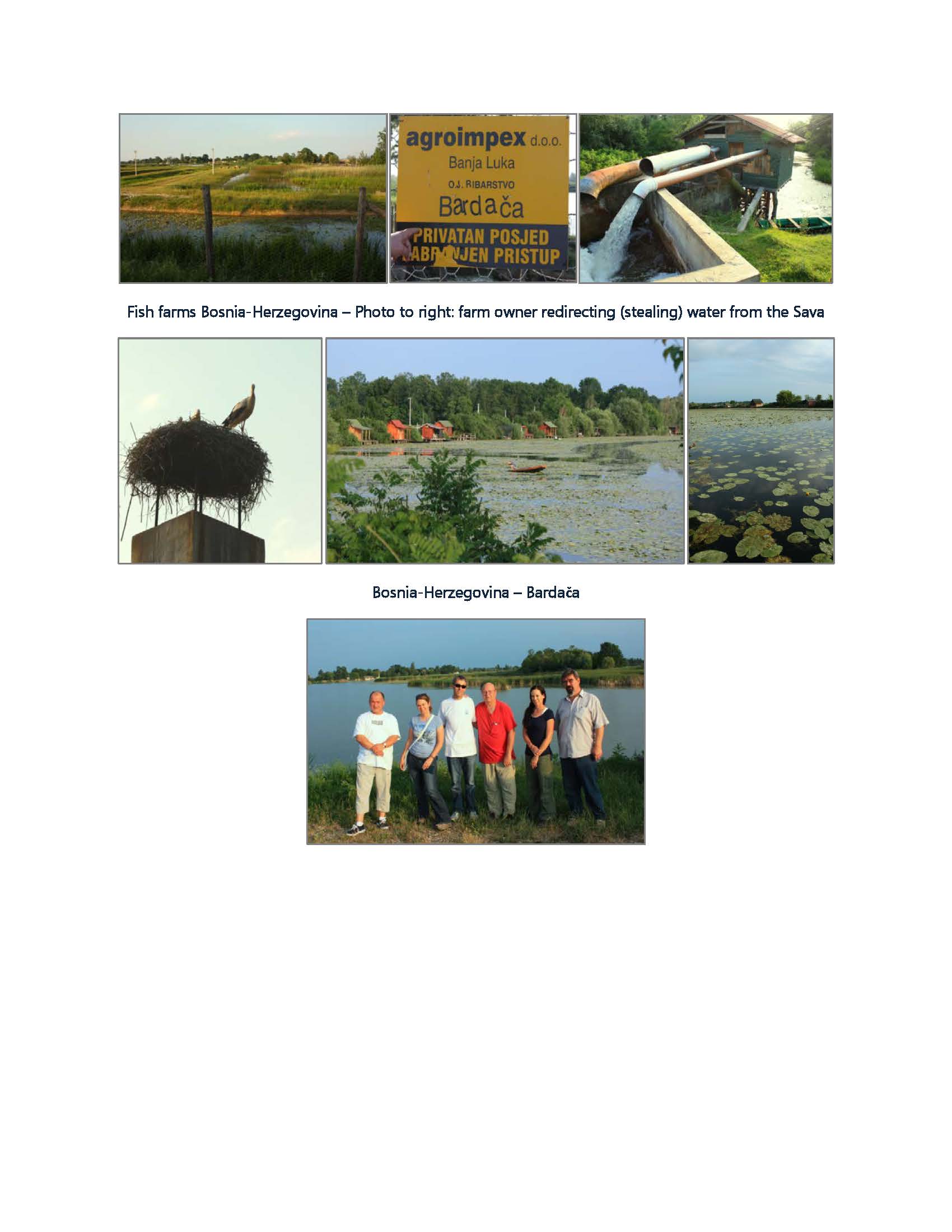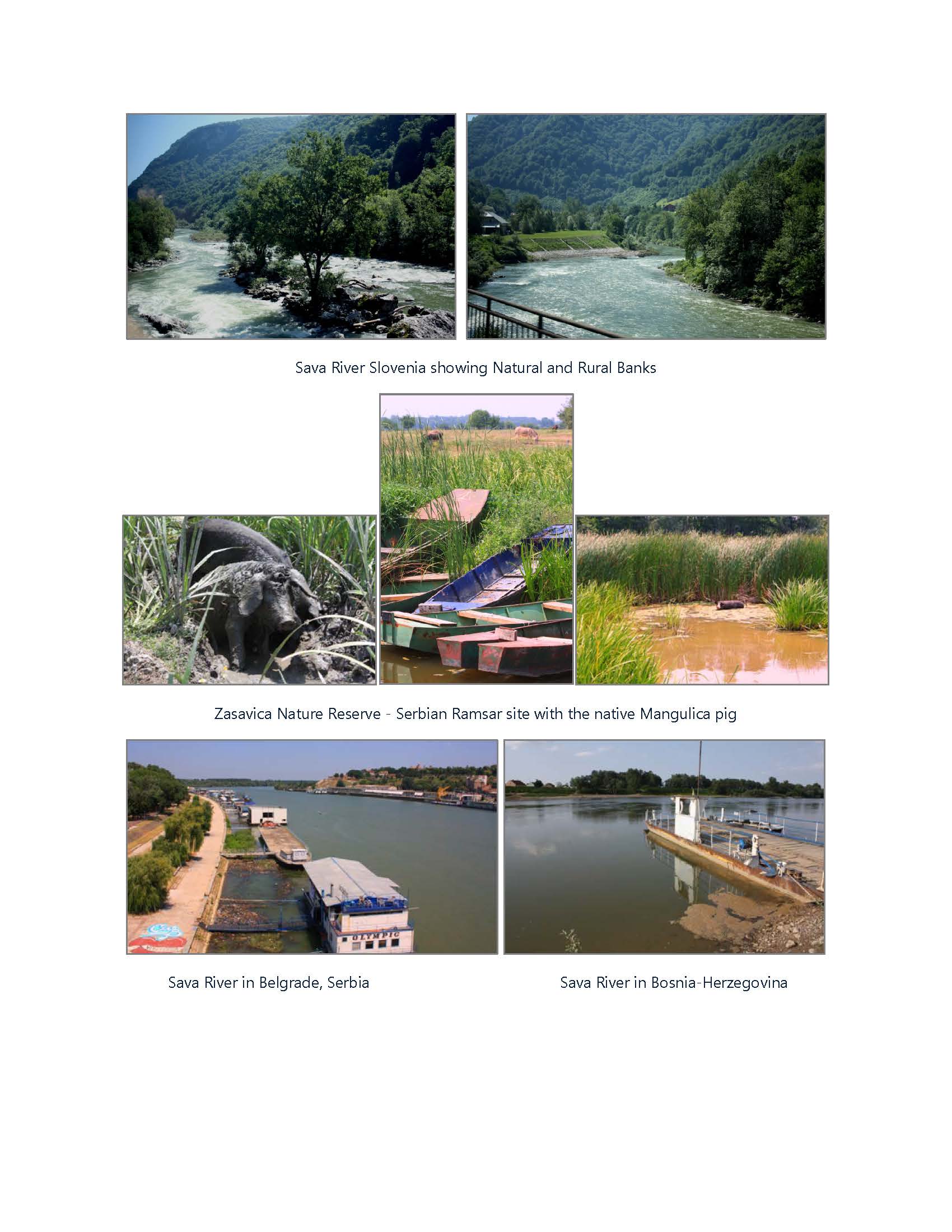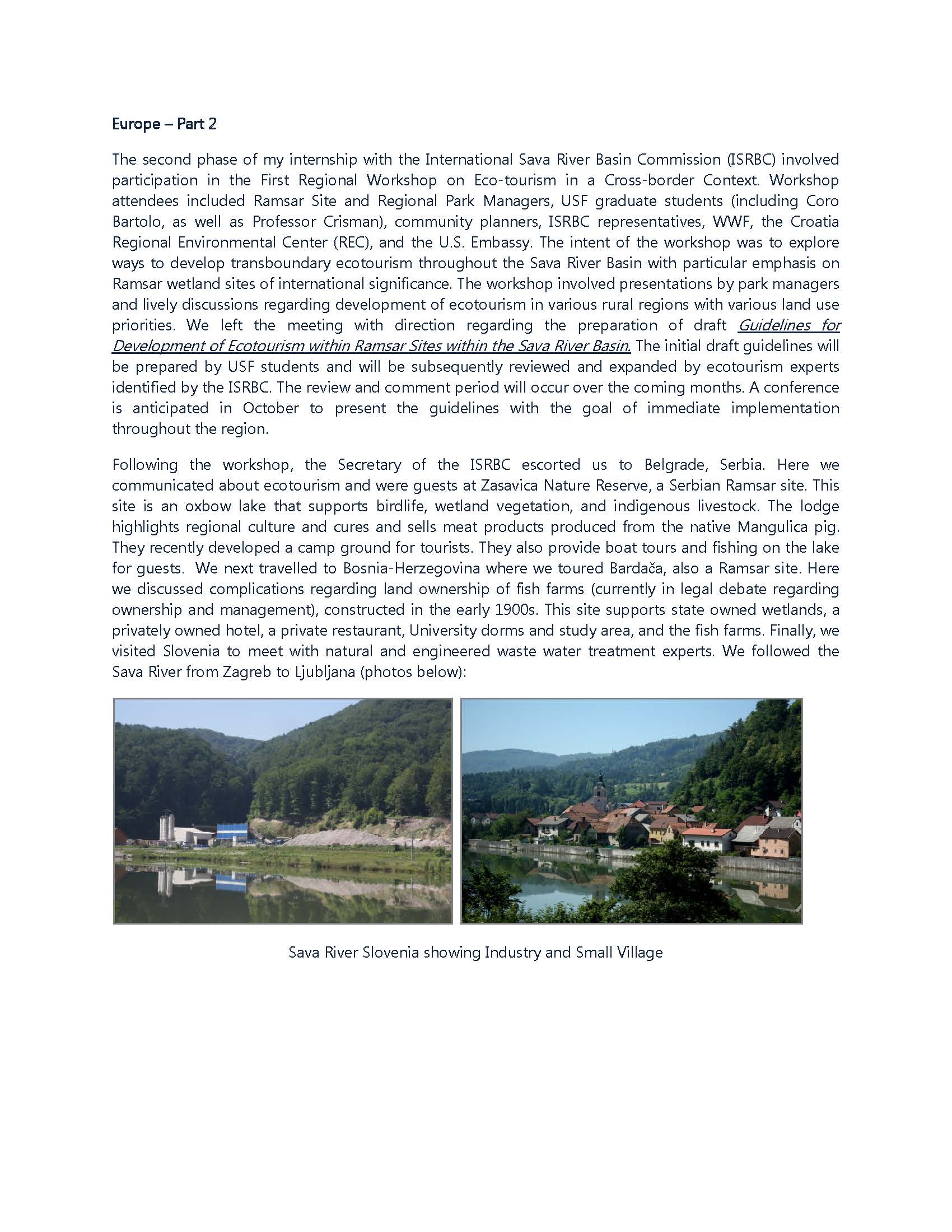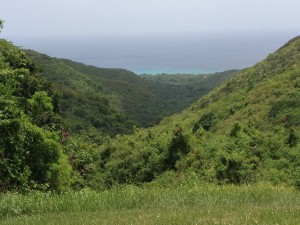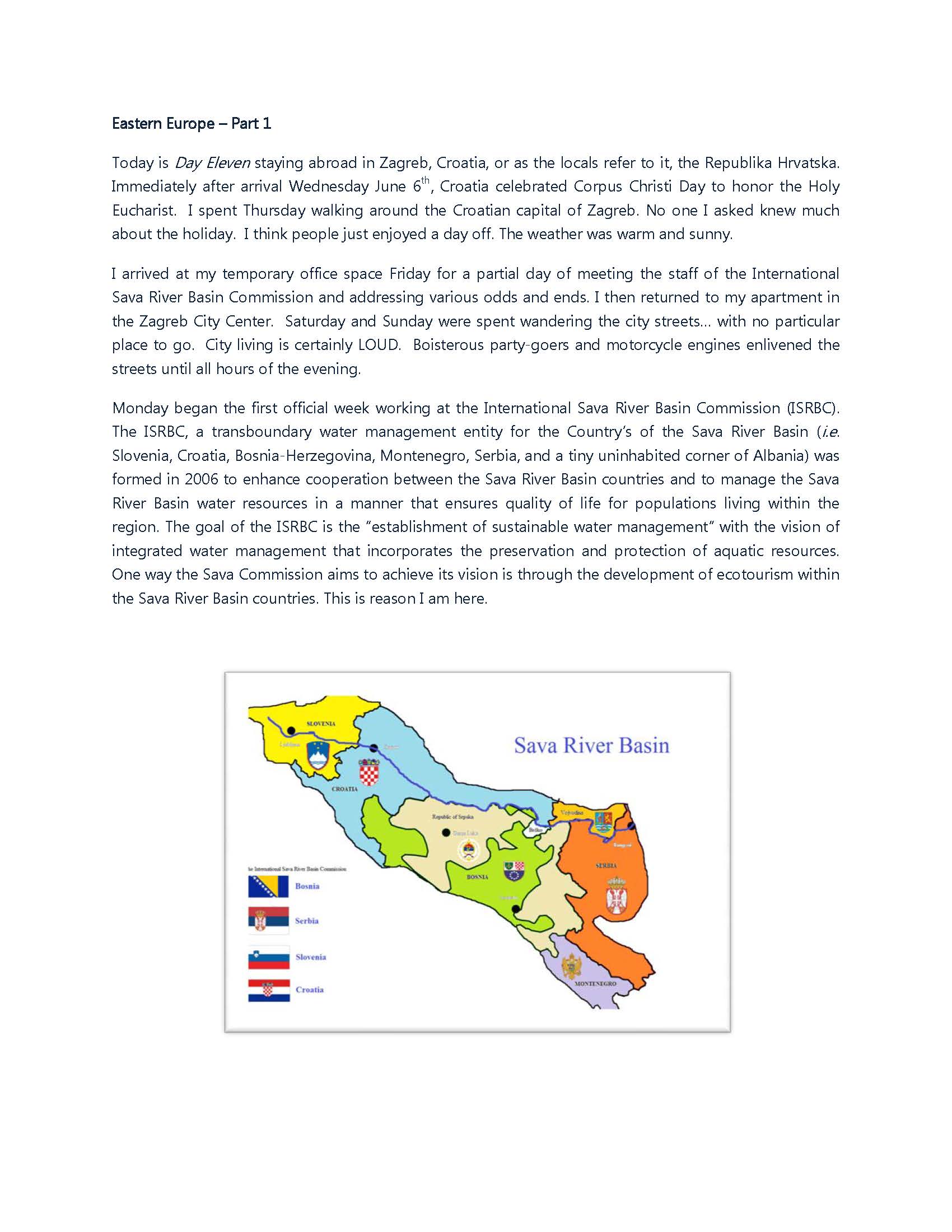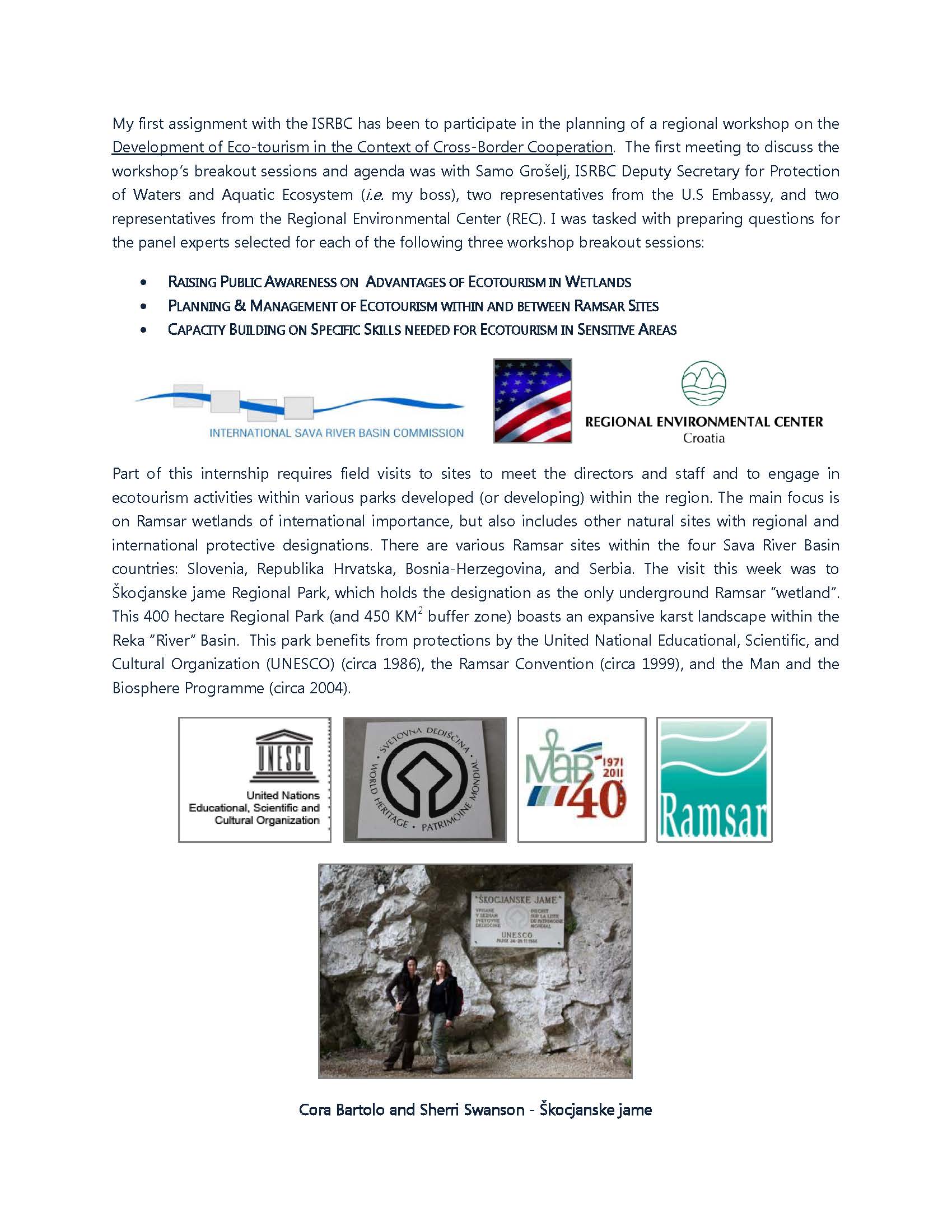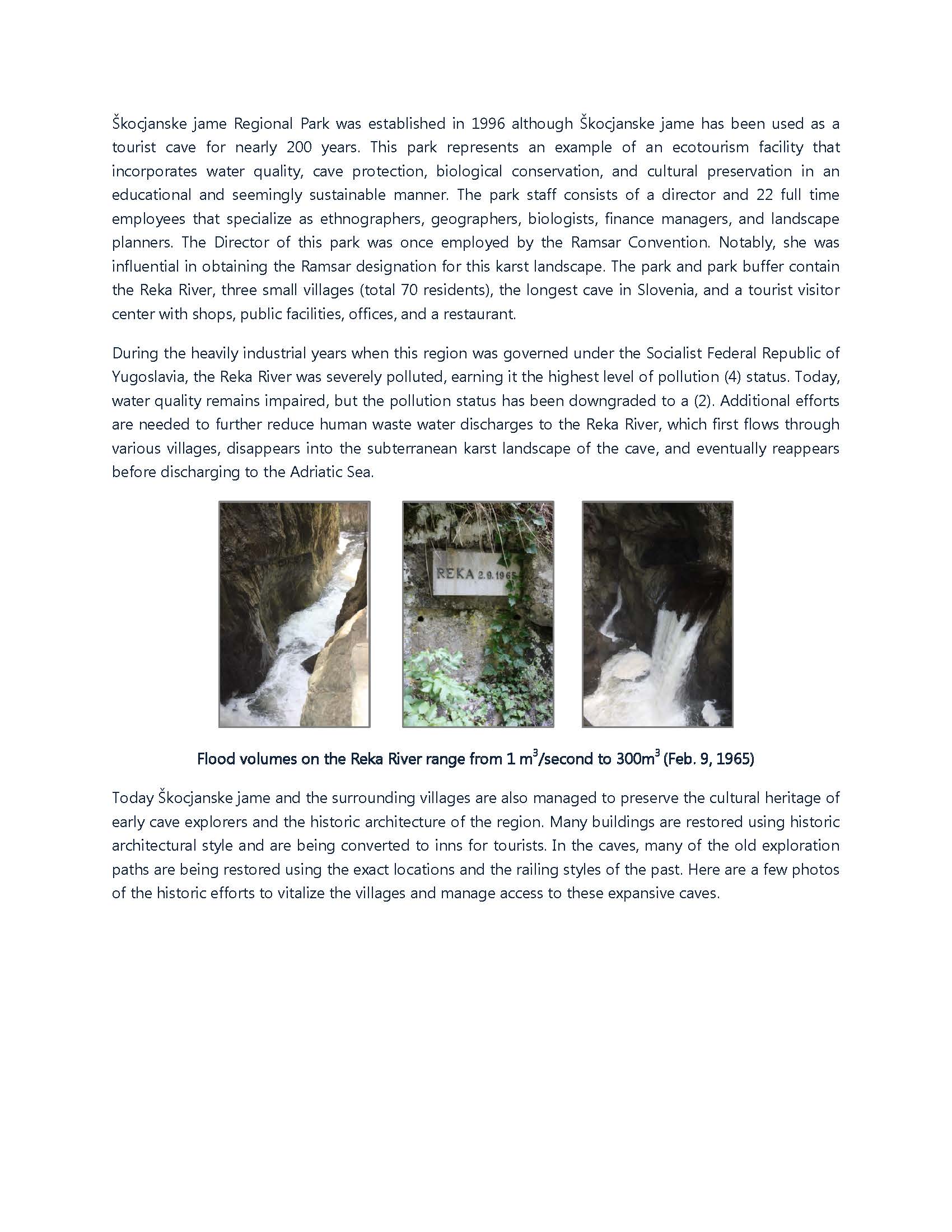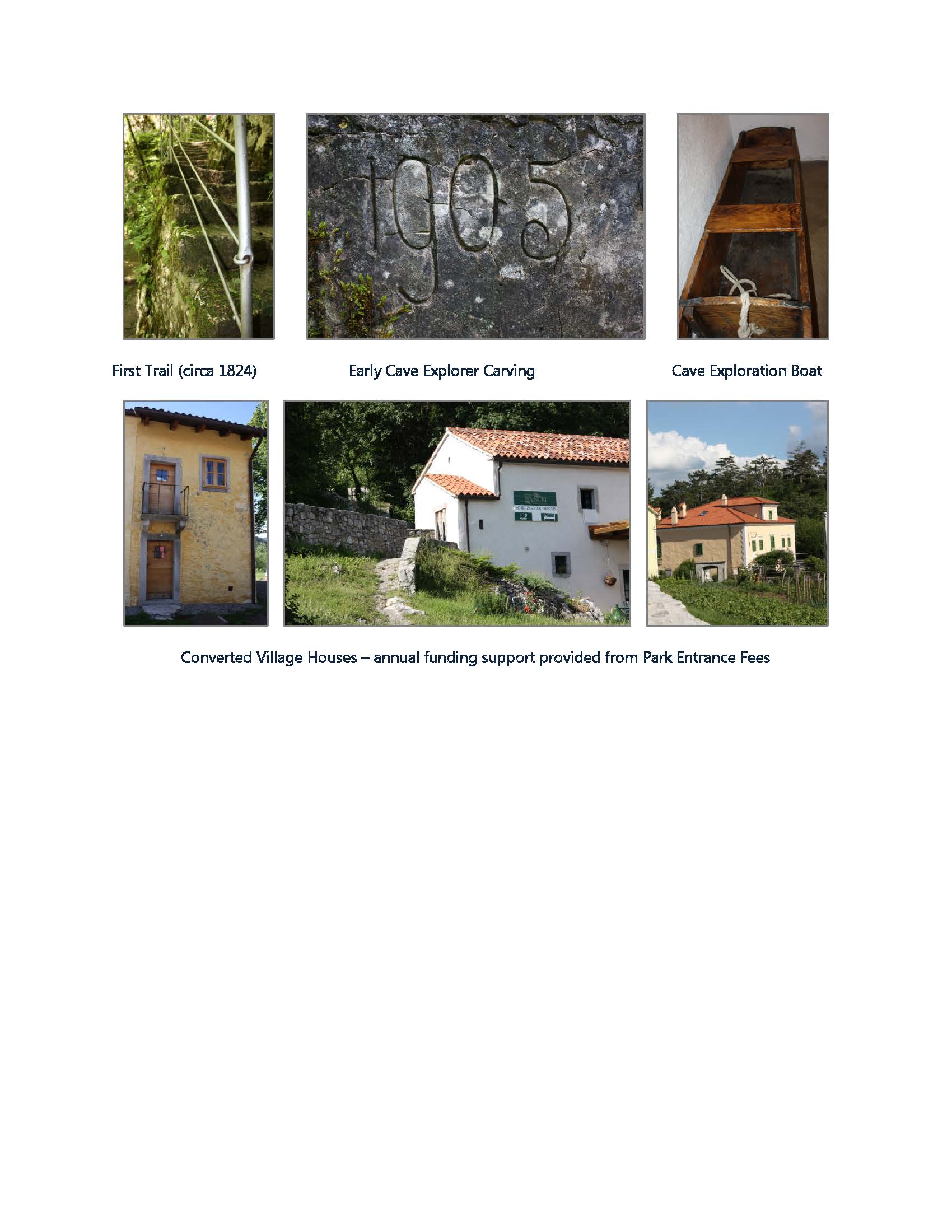|
|
It’s the long weekend here in Canada, and roughly the halfway mark of my internship. I came here with the expectation of a fairly narrow, single-task project; the reality has proven to be far more stimulating and productive. My work has been a fairly even split between research/proposal writing and active engagement in municipal work, each feeding into the other.
Now at the mid-point of my time here I’m moving into a new phase. I’ve wrapped up my existing projects and last week came across an ambitious aquaponics proposal that could result in a pilot project in Markham. If it works out–and that’s a big ”if”–this project could solidify Markham’s place as the premier hub of sustainable innovation.
KAYLA SINOTTE
My first week on St. Croix at the Sustainable Farm Institute has been amazing so far to say the least! So much as happened I’m not even sure where to start.. Check out more about the Farm and the Ridge to Reef program at http://www.visfi.org/
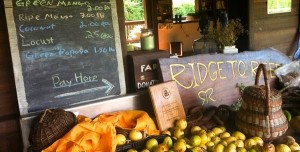 Ridge to Reef The first two nights here, the farm hosted a slow down dinner. People from the island came to enjoy a six course meal made from all locally grown organic food. It was an amazing experience to be able to share our food and knowledge to the community of St. Croix. I am here to take a six week permaculture certification course and emerge myself in a sustainable lifestyle. The farm grows their own food, produces their own energy, and continuously hosts programs to educate the community.
 Slow Down Dinner 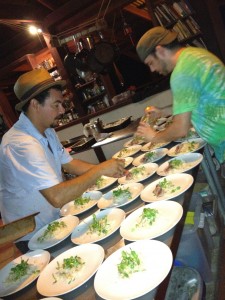 Locally grown organic six course meal Day to Day Life of the Farm:
The day begins at 6am, we work out in the field doing anything and everything from building a compost pile, planting seeds, transplanting crops, mulching, weeding, etc. We break at noon for lunch, preparing freshly grown food we have harvested ourselves; and then right back out to the fields until dinner. We do this everyday.
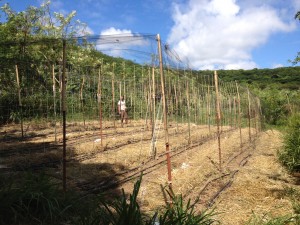 One of the Gardens The farm is like its own little community; there are nine of us who live and work on the farm. We have a schedule for feeding animals, harvesting the chickens eggs, and cleaning the common spaces. The community center is the heart of the farm; it is our gathering space where we all hangout, prepare and cook food, and take class some days.
 Community Center Three of us are taking the Ridge to Reef permaculture certification course while on the farm. We meet for ‘class’ three times each week to discuss different principals and topics. Most of our learning is from hands-on experiences, working out in the field, with our hands. A person cant expect to understand and practice sustainable living without actually living it. Each of us doing the program must complete a permaculture design project during our six week time here in order to obtain the PDC certificate. We must design, construct, and present our project to the farm.
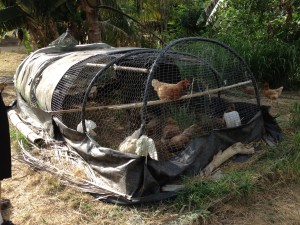
Permaculture Project
The project I have discussed and finalized to be my permaculture project will be to obtain the National Organic Certification for the farm. This includes mapping out the entire property and establishing all the different zones and sectors overlaying all the different elements. It also requires a written plan which describes everything from our cropping process and rotation to each ingredient we use.
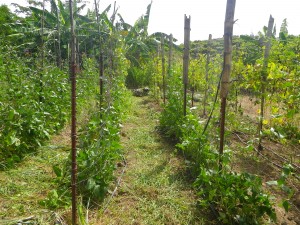 Swale 2 Back to Work
I have enjoyed every minute working on the farm, and I am excited to think I have five more weeks of this. Internet access is limited and forget about cell phone service. I had to stop transplanting tomato plants to write this blog so everyone can keep up to date on my time here. As much fun as this has been, Its time to get back to work.
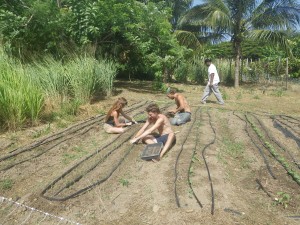 In the Field 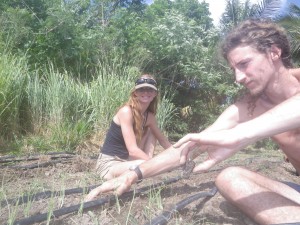 Transplanting parade onions Until next time,
Kayla Sinotte
CORA BARTOLO
I’ll be brief this time… This week was also jam packed with activities. I began the week by taking a train to Slovenia to attend two meetings in the capital city, Ljubljana. To my eyes, Slovenia is a smaller, quainter, quieter, village-structured country. It boarders Italy on the west and in my imagination it resembles that country and its culture somewhat.
Our first meeting was at an engineering company that designs small-scale waste water treatment plants. The can be for a single home – 4 p.e. or a small village community at 150 p.e.. These small plants have a primary settling tank, an aeration zone, and secondary treatment plant equipped with its own biological treatment. In Slovenia (member of the EU), septic tanks have been banned in most circumstances. The government ran a tax incentive program to encourage the transfer to these types of systems. We learned though, that many “off brands” if you will, are being constructed and are likely not meeting specifications. You can find out about the design of these plants at www.hidroinzeniring.si
The real excitement came for me when we visited a company called Limnos. They do constructed wetlands and other types of eco-remediation, primarily in Slovenia, but in other areas of Europe as well. Their website is available in English and I highly recommend that you visit it. They can be accessed at http://www.limnos.si/eng/index.php . They indicate to me that these wetland/eco-remediation sites have approved standards that have been approved by the EU to treat many types of water including landfill leachate, municipal sewage, and agricultural run-off. They can also construct systems that remediate what we call brownfield sites. My dream has come true – do they have a job opening ???
Later in the week I attended the regional eco-tourism conference hosted by the ISRBC, managed by a regional NGO (The Croatian division of the Regional Environmental Center – REC) and financially supported by the US Embassy to Croatia (economic department). The ISRBC is the first form of transboundary cooperation between these countries of the former Yugoslavia. As you know, these countries (except Slovenia) also engaged in a war for many years. There is still evidence of war and tension in the people and the buildings, however I will write about this at another time. The ISRBC offers hope that these countries can work together and begin peace through cooperation and potentially through transboundary eco-tourism. I don’t want to give the impression that there is hatred and present conflict, because there is not; however, one can sense hesitation and trepidation between these neighbors.
If you don’t know anything about this area of the world, treat yourself to a few Google searches.
SORANIA RIVERA
This last week in Culebra was wonderful! From the barely 2000 residents of Culebra I have been able to in various occasions share casual conversations with the locals on the Island’s sustainability. The weather has been hot and humid. The Sahara dust makes the days hazy and the views not as breathtaking. The island could surely use some rain! I traveled to the main island of Puerto Rico on the weekend looking for some items not found in Culebra’s (such as fresh produce) and was able to ride on one of the new subcontracted ferry boats. The ride on the new Big Cat Express was definitely much nicer than the old one I rode on my first trip. This time I didn’t get sick from the indoor smell of fuel.
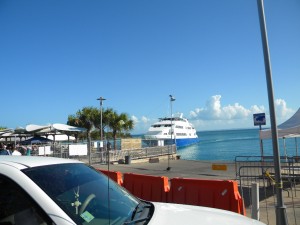
This week CORALations prepared the “Laberinto del Tinglar” or the Labyrinth of the Tinglar (leatherback turtle) for the kids at the summer camp at the “Escuela Ecologica”. With the collaboration of a group of students from “Cesam Sociedad Ambiente Marino” (Cesam Marine Environment Society) and other volunteers the campers were able to enjoy the journey of the Tinglar to its nesting beach. Especially the little ones seem very excited to complete the journey with the guidance of the volunteers who narrated the path through the maze. The team worked many hours to put the exhibition together, but the smiles of satisfaction from the kids will last forever in our minds.




I love the little corner of the marine biology room at the Escuela Ecologica I was provided to do my desk work. I am surrounded by marine biology books, images of fish, corals and “Tinglares” and the tools necessary to provide the local kids with a great learning experience under and out of the water.


CORA BARTOLO
As some of you know, I am working closely with another student from the program, Sherri Swanson. The general focus of her project is sustainable eco-tourism within wetlands but I encourage you to read her blogs for full details. The focus of my project was intended to be utilizing treatment wetlands (TW) to improve water quality along the Sava River Basin (SRB). In conjunction with this concept I’ve been studying how these TW can be utilized to remediate eutrophic water bodies and how they can be used to treat agricultural run-off and municipal waste water.
Shortly after I arrived (less than 24 hours as a matter of fact) we were in a meeting with top executives (the Secretary and the Deputy Secretary of Water Management) of the ISRBC to discuss the primary goal of the ISRBC at this time. This is the time I realized that was in the middle of an eco-tourism project with almost no study experience to lean on. Fortunately, I was able to discuss my research goals during this meeting and I was able to introduce the utilization of TW to improve water quality and treat waste, carefully framing my ideas within the context of eco-tourism. The ideas we met with mild interest, more so from the Secretary than the Deputy (both are Civil Engineers).
The following day we met with an NGO, seemingly in charge of the details of the upcoming regional conference on eco-tourism, the Croatian division of the Regional Environmental Center (REC), and with two representatives from the economic department of the US Embassy to Croatia. Here, participants discussed attendance, regional interest, and logistics of the conference. Once the topic turned to issues concerning eco-tourism, Sherri and I were able to interject with ideas of sustainability. I was also able to bring up the TW concept at this meeting. The ideas were met with some interest on a conceptual level.
Certainly it seems people are generally confused and perhaps irritated with the term sustainability. What does it mean, why is it used, it is so general it doesn’t make sense, etc.
On a personal note: I find the city exciting and interesting. In many ways it seems like a typical northern city where there are shops and restaurants lining the streets, except the buildings are much more interesting and the culture of the people is different. Many people walk here and public transportation is used widely in the city. They have trams that are still powered by above ground power lines. There are a good amount of cars on the road during rush hour as well, but far less than the typical American city. English is not really spoken here at all among the locals, but younger people do seem to be able to communicate adequately with us. If an older person cannot speak with us, they generally call a younger person to interpret. Also, most menus have English written below the native language so the language barrier has been not been horrible. The strangest culture clash has been the grocery and the food eaten here. The only way to really know what is on the grocery shelf is look at pictures. For instance, the dairy products, they will have a cow or sheep on them to indicate which animal the milk came from. Hmmm…. I eat the sausage here so I am sure that I have eaten some exotic meats but I do stay away from the strange meats as a general rule. Things served here include cuttlefish, octopus, squid, sheep, lamb, veal, meals with the ink of squid, to name a few.
JOHN VAN HEZEWYK
In the space of a few days, my project here in Markham has evolved into four projects–all squarely within my research area. Having completed work on the Sustainable Community Grant, I was tasked with inquiring into a policy or bylaw shift to allow and promote (possibly require at some point) hybrid and fuel-efficient taxis. This led me to connect with several departments and committees here at the Town, including Accessibility and Licensing.
On a less-involved level I’m also continuing to work with Outreach at community events, and will meet with York Region Food Network next week to examine a multi-municipality marketing strategy for the regional food security group. I was also able to tour a district energy facility today as my office showcased it for a group from York University.
Aside from projects, my placement with the Town government has given me access to and insight into the workings of the municipality at an exciting time. In the next few weeks the Town of Markham will transition to the City of Markham; this makes few practical differences, but reflects a shifting image and reality. A relatively undeveloped swath across the southern end of the Town is slated to become a high-density, mixed use urban center–a sustainable city center within the larger municipality. This planned district–part of which is built on land once owned by my family–will feature district energy, BRT, green infrastructure, and LEED buildings.
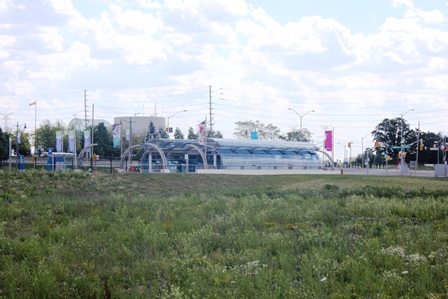 Viva BRT station
MONJA MIHAJLOVIC
I have officially experienced my first typhoon! I came to the university today to get some work done when one of the graduate students kindly informed me that there would be a typhoon that afternoon and that if I had to take a train home, I should leave earlier since they would probably be canceled in the afternoon. I think “typhoon” is a glorified word for tropical storm though, because it really did not seem like anything to worry about, but then again I was indoors and I really did not have a window to witness the storm for most of the night. Either way though, apparently there will be another one on Friday, so we will see what it entails for me! I hope that this means there will actually be good weather for my last few days in Japan next week.
I had an extremely interesting interview with a professor from the Graduate School of Economics today. He talked about his work with an organization he created, called Harasou. It is a Non-profit organization which works on reducing the waste from packaging in Japan. He works with undergraduate students who in 2007 began at a local grocery store and began studying different types of products and how much packaging they produce. They would then label which products contained the least amount of waste and basically label them to say that customers should pick the ones with least amount of packaging. They then studied to see whether they influenced the customer’s decisions by studying sales before and after. In additions to the studies they have events called the Harasou Café, where the students meet with housewives from the area to discuss with them how they feel about packaging and what they want to see done and whether they are willing to choose the products that contain the least amount of packaging. I found this to be extremely interesting and was happy to hear that Japanese women actually seem to be very interested in this, and find reducing waste to be of personal importance to them. Sometimes they even invite engineers from food companies to see how they feel about the issue and to talk with the women about what they want to see done. The program has expanded each year to include other grocery stores, and the biggest bread company in Japan is now reducing their waste and using the Harasou logo to spread the word. They even had a Harasou conference in Tokyo last year where they invited companies and the environmental government agencies to participate and spread the word, everyone seems to be on board. It was really inspiring! I think they said that the bread company alone has reduced their waste b over 14 tons.
I think that this weekend I will go to the Memorial Museum to learn more about what happened during the earthquake in 1995 and to see what they have done since to help prevent future such catastrophes.
JOHN VAN HEZEWYK
Beginning my second week at the Town of Markham Office of Sustainability, I have already been involved with a broad range of projects and activities.
Saturday I worked with the Outreach folks at the Markham Village Music Festival, spreading awareness about the Town’s Greenprint sustainability plan. Our current focus on food security was front and center, as we discussed local food options and the importance of maintaining the Town’s green spaces for both biodiversity and agriculture. This morning I participated in a committee meeting on road ecology, joined by the Ontario Road Ecology Group and the Toronto and Region Conservation Authority as well as various municipal departments.
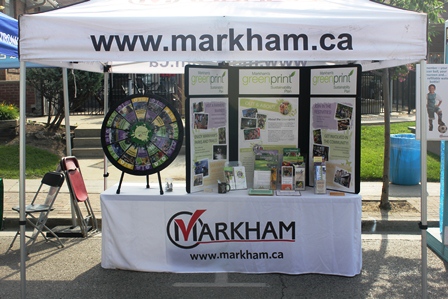 Markham Sustainability Office outreach booth 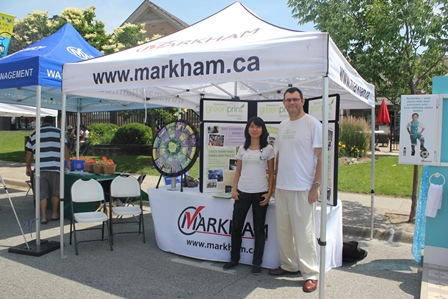 outreach with summer student Sarah Ko
|
|

